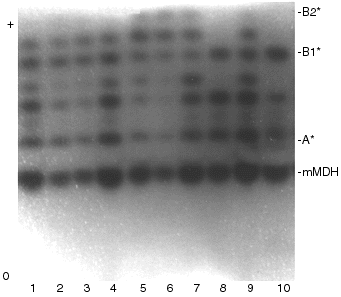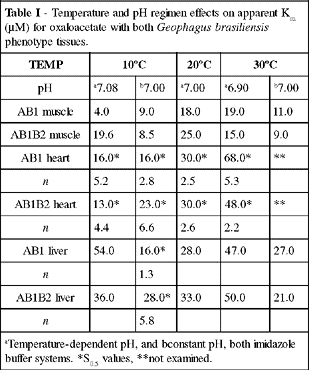A recent locus duplication hypothesis for sMDH-B* was proposed to explain the complex electrophoretic pattern of six bands detected for the soluble form of malate dehydrogenase (MDH, EC 1.1.1.37) in 84% of the Geophagus brasiliensis (Cichlidae, Perciformes) analyzed (AB1B2 individuals). Klebe's serial dilutions were carried out in skeletal muscle extracts. B1 and B2 subunits had the same visual end-points, reflecting a nondivergent pattern for these B-duplicated genes. Since there is no evidence of polyploidy in the Cichlidae family, MDH-B* loci must have evolved from regional gene duplication. Tissue specificities, thermostability and kinetic tests resulted in similar responses from both B-isoforms, in both sMDH phenotypes, suggesting that these more recently duplicated loci underwent the same regulatory gene action. Similar results obtained with the two sMDH phenotypes did not show any indication of a six-banded specimen adaptive advantage in subtropical regions.






